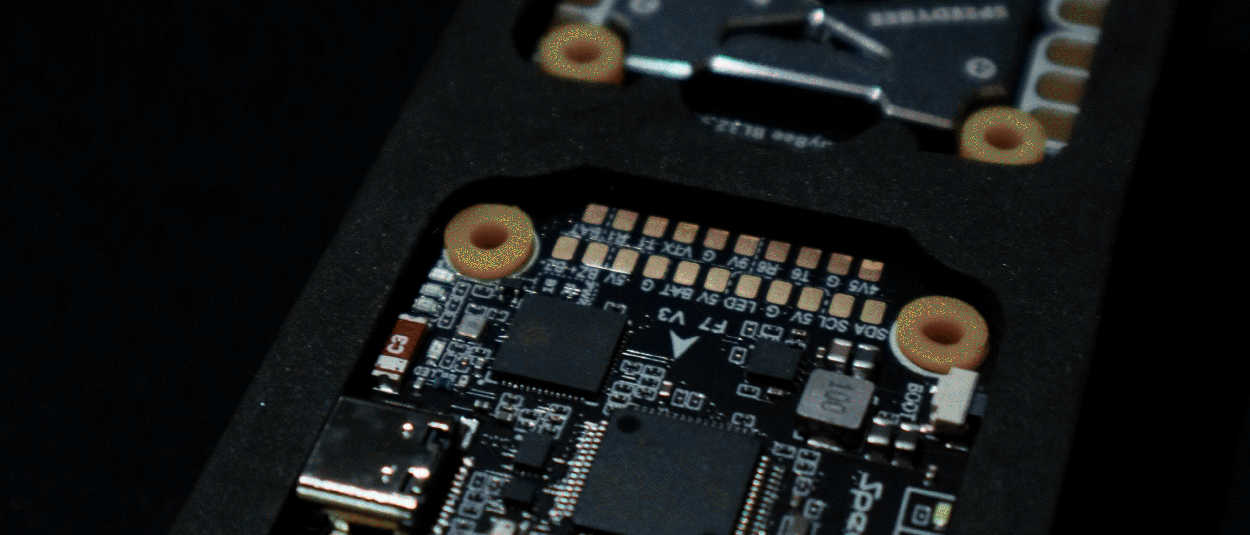
How to Choose the Right Inertial Measurement Unit for UAVs
Modern UAVs have remarkable sensing abilities. Every pitch, yaw, and gust of wind is measured, interpreted, and corrected in real time—often without any signal from above.
At the heart of that awareness is the inertial measurement unit sensor. As UAV missions grow more complex, the quality of that IMU often marks the line between precision and failure. Here’s how to select the right one for your platform.
What Is an Inertial Measurement Unit Sensor?
An inertial measurement unit sensor (IMU) measures a UAV’s motion through space, tracking angular velocity, acceleration, and orientation using gyroscopes, accelerometers, and sometimes magnetometers.
In high-stakes conditions where GPS fails, an IMU becomes the UAV’s guiding force. Without it, a drone would drift, tilt, and spin its way into irrelevance, especially when GPS disappears and the drone cruises through featureless terrain.
Key IMU Specs That Impact UAV Missions
Not all inertial measurement unit sensors are made equal. Some drift slowly, like a boat losing its mooring. Others hold tight through turbulence, vibration, and electromagnetic interference. The difference lies in the details. When comparing IMUs, focus on:
- Drift rate. Indicates how far the IMU’s estimated position can veer from reality over time. In lower-tier units, drift builds quickly, turning flight into guesswork. Premium models, especially those fused with AI, keep deviation minimal.
- Bias stability and noise density affect how clean and consistent the sensor data is. High noise leads to jittery flight and poor hover control. Low noise keeps positioning steady. For missions in tight spaces or close to sensitive infrastructure, both matter more than raw speed.
- Update rate (Hz) reflects how frequently the IMU refreshes its data. Faster rates allow quicker reaction to wind shifts or sudden moves, crucial for indoor operations, urban missions, and unpredictable conditions.
- SWaP (Size, Weight, and Power). Every gram counts. A heavy or power-hungry IMU shortens flight time and limits payloads. Lightweight systems like Bavovna’s 800-gram AI INS kit can deliver high-end performance without the drain.
Lastly, consider environmental resilience. The best IMUs are resistant to vibration, shielded against electromagnetic interference, and calibrated to withstand heat, cold, and pressure swings. Look for rugged models to avoid unsavory surprises midflight.

How to Match the IMU to the Mission Profile
No internal measurement unit works in isolation. Effectiveness depends on how well its strengths align with the job.
UAV mapping missions demand surgical precision. A drone flying grid patterns over farmland or construction zones must maintain altitude and orientation to the centimeter. Even minor drift can corrupt data. Ultra-low noise, high refresh rates, and tight bias control are essential.
Surveillance and reconnaissance, especially in GPS-contested zones, require something different: steadiness without reliance on external signals. A drone loitering silently over a target must adapt to wind, terrain, and signal interference. Positioning must be consistent, even if GPS fails. This is where a hybrid INS, powered by machine learning and fused sensor data, keeps the aircraft focused and invisible — something we offer as part of our AirTower mode.
Border patrols in remote zones bring their own challenges: empty landscapes, no signal towers, no landmarks. In these missions, an IMU with ultra-low noise density, high update rates, and tight bias stability becomes non-negotiable.
Across all scenarios, the IMU doesn’t just survive the flight — it defines its outcome. The sensor becomes the UAV’s inner compass. A poor choice risks the mission itself.
The Bottom Line
Choosing an IMU isn’t only about performance. Fit, efficiency, and reliability under pressure matter just as much.
That’s why Bavovna builds for real-world purposes, not just specs. Our AI-powered Hybrid INS sensors are trained on data from chaotic, signal-denied flights. Plug-and-play, cross-platform, and proven in the field. If your UAV has a mission worth completing, we’ll make sure it has the navigation to succeed. Learn more about our AI navigation kit.



